Vin de noix, also known as walnut wine, or green walnut wine, is arguably the most well-known use of green walnuts in France. It's a cousin to the more well-known nocino, the Italian liquor made with green walnuts.
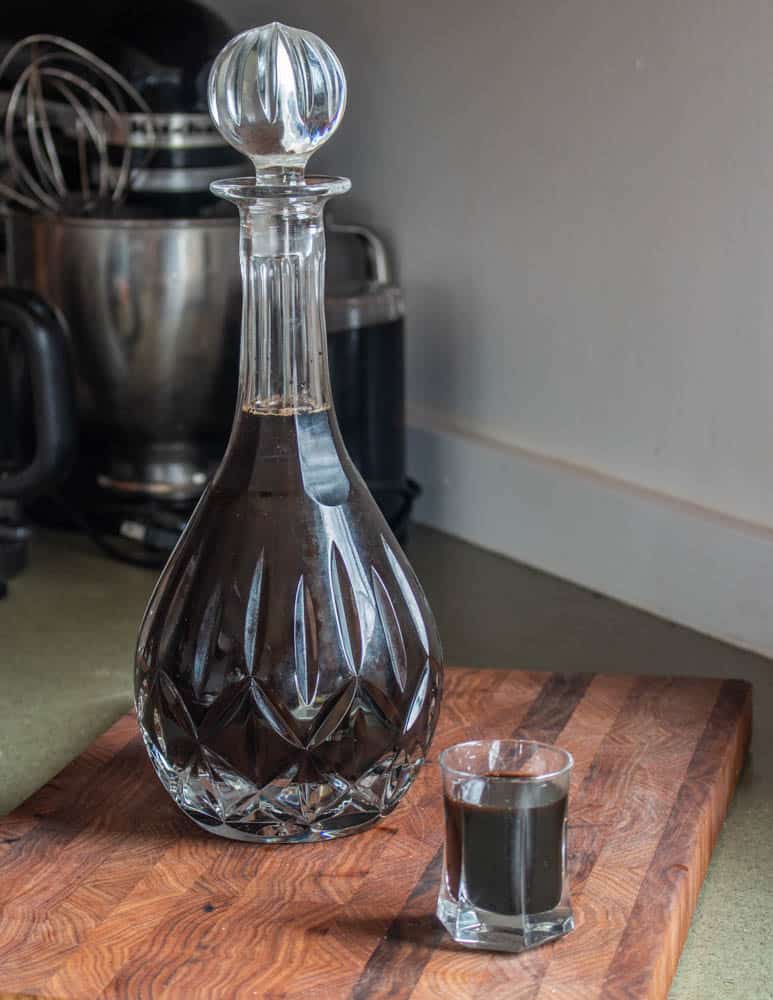
If you've made nocino and liked it, and have wondered about the French version, I'm here to tell you that it's absolutely worth making, and I prefer it to nocino, personally.
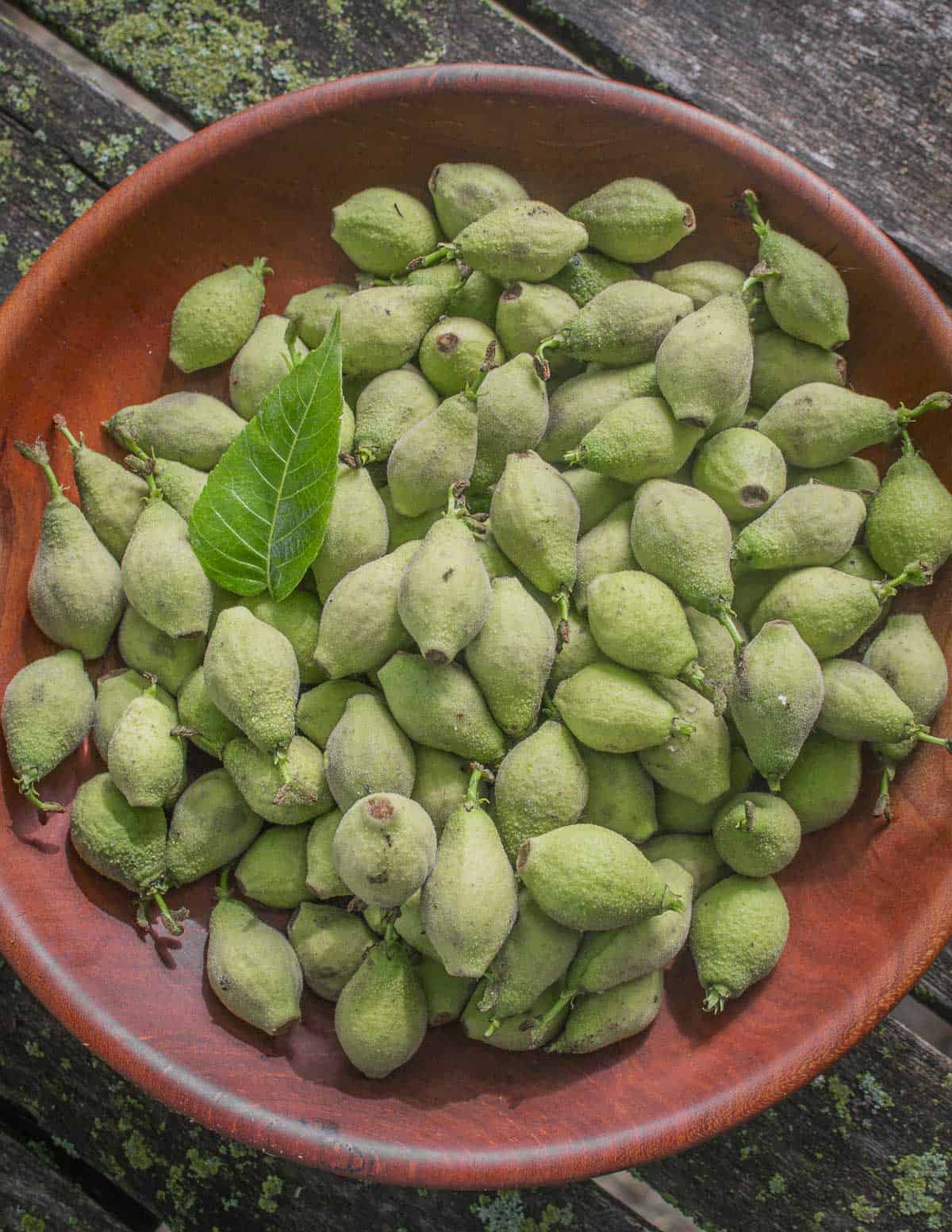
Vin de noix vs Nocino
Both liquors are made from alcohol mixed with green walnuts and, depending on the recipe, a small amount of spices, although some people might say no spices. Like with a lot of traditional recipes, there's plenty of variation.
The big differences here are in the amount of green black walnuts used to make the finished product, and in the alcohol(s) used.
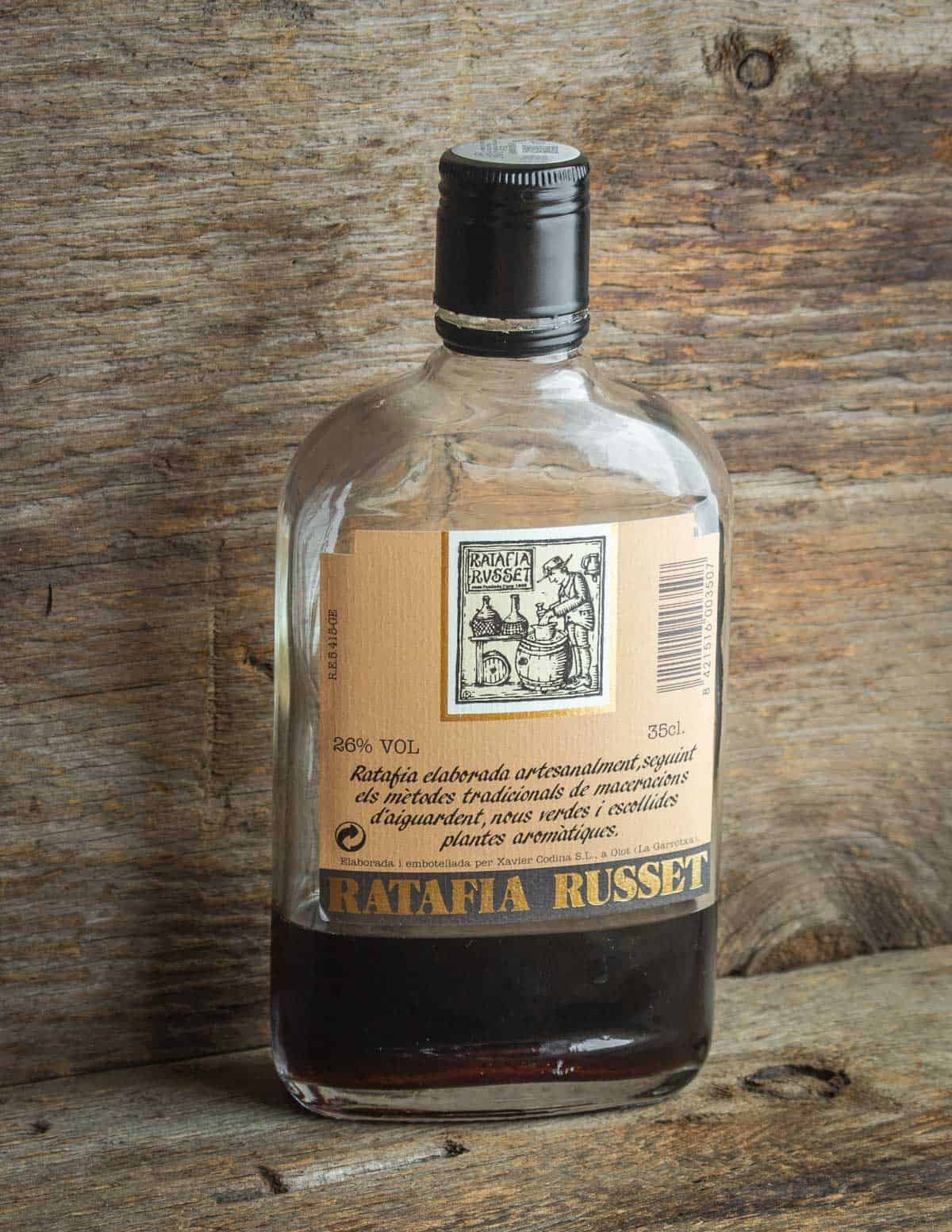
Nocino is traditionally made with a flavorless alcohol like everclear or vodka, with the most common recipes simply telling you to cover halved green walnuts with booze, letting them sit for a month before straining and adding simple syrup or maple in the case of my favorite recipe.
Nocino is usually pretty strong, with an ABV of about 35-50%.
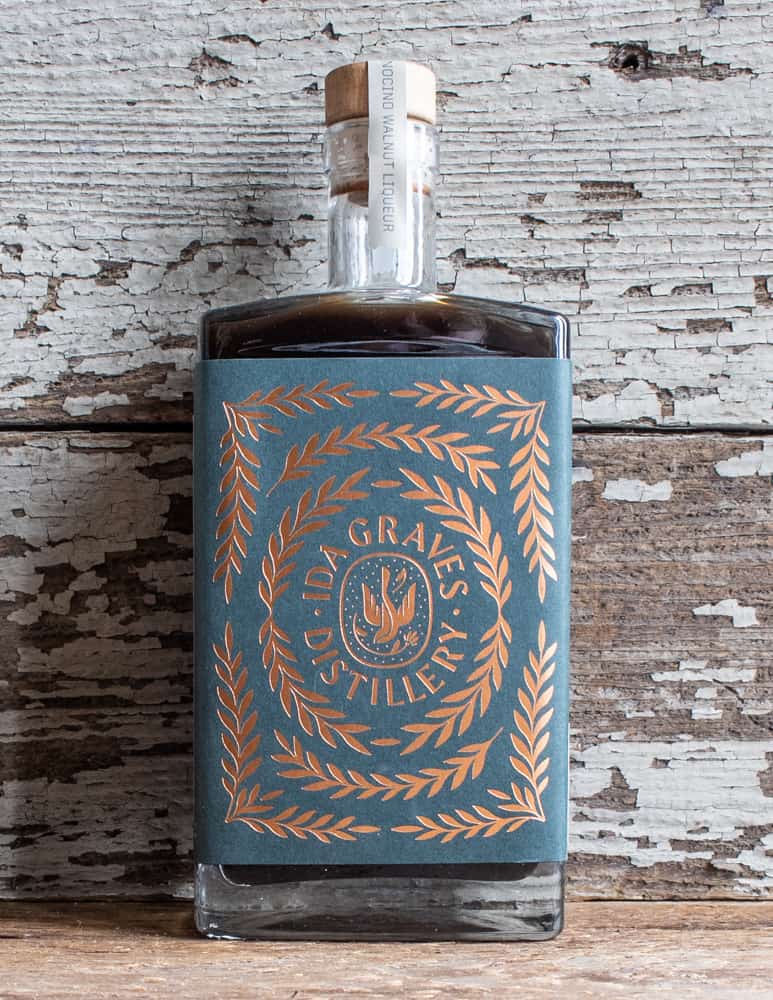
Vin de noix, on the other hand, is made from a combination of red wine and spirits, typically brandy, meaning that it has a lower ABV than nocino, which can be very strong depending on who made it. Also, the amount of walnuts in vin de noix, at least from the recipes I've seen, is much less than nocino, which means the tannins aren't as strong.
Typically the ABV will be similar to sherry, coming in at around 15-20% from what I've seen. Personally, I like the lower ABV of vin de noix as it makes it easier to sip, but you can also dilute nocino to get a similar ABV if you like.

Less walnuts=less aging and tannins
Nocino is famous for taking a long time to age. Black walnuts are incredibly tannic, and it takes at least 6 months or longer for the tannins to calm down and mellow.
As vin de noix contains less nuts, it's going to be more palatable for most people, and mine is typically ready faster than nocino, although when you're aging something for multiple months at a time, another month or two isn't really a big deal. I like to let both of them age for at least 6 months just to be safe. Taste the liquor from time to time as it ages and you'll see what I mean.
Use a dedicated container
Black walnuts turn things black-very black (they're also used to make black dye). So, I use a container dedicated to the purpose of making vin de noix, since even glass can get stained black where the liquid touches the container. You want to use a glass container here, since metal could react with the alcohol.
While nocino can be made in small containers like quart mason jars, vin de noix requires more space, so I like to use a 1 gallon glass container. Used gallon-size pickle jars, assuming they're very clean, are cheap and make a good vessel for aging.
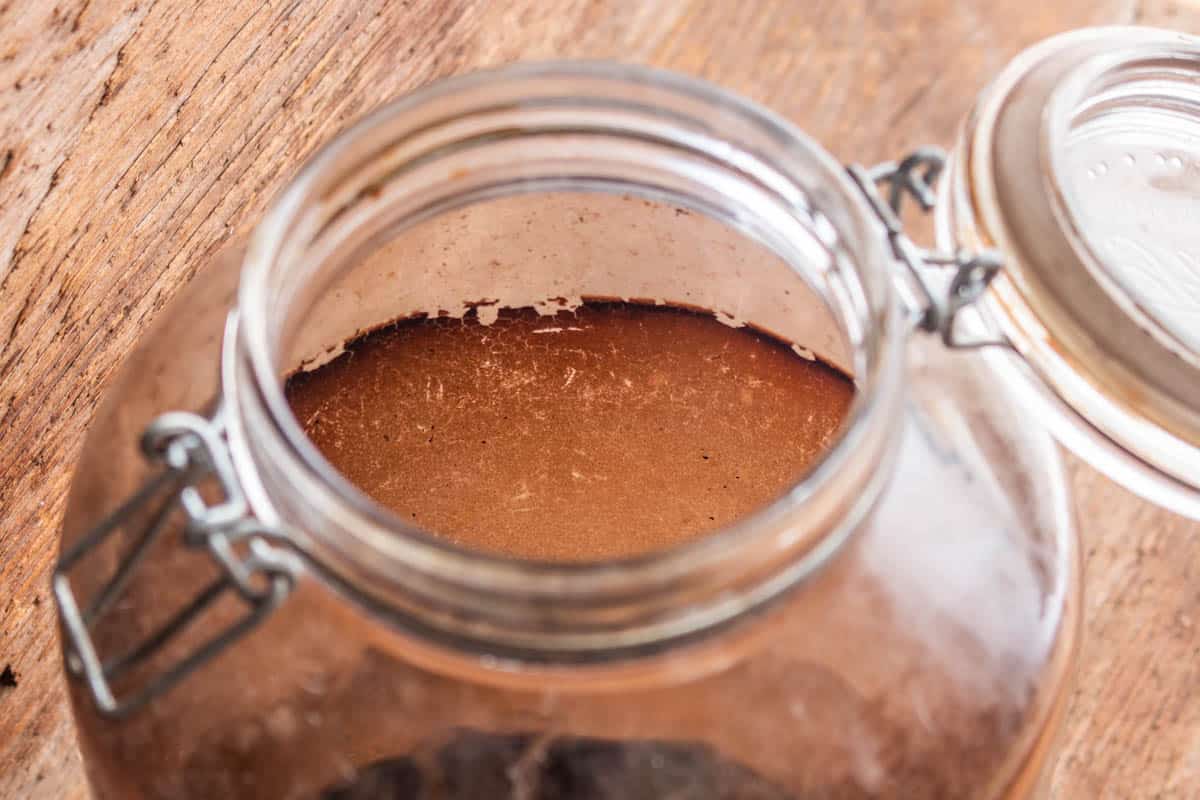
Aromatics
Just like with nocino, there's lots of debate as to exactly what aromatics should go into vin de noix. After making both types of green walnut liquor for years now, the most important thing I can tell you is that less is more.
Here's a list of some aromatics to use, and some I would stay away from. Note that all of the aromatics here should be accents, used in small amounts. They should not take over.
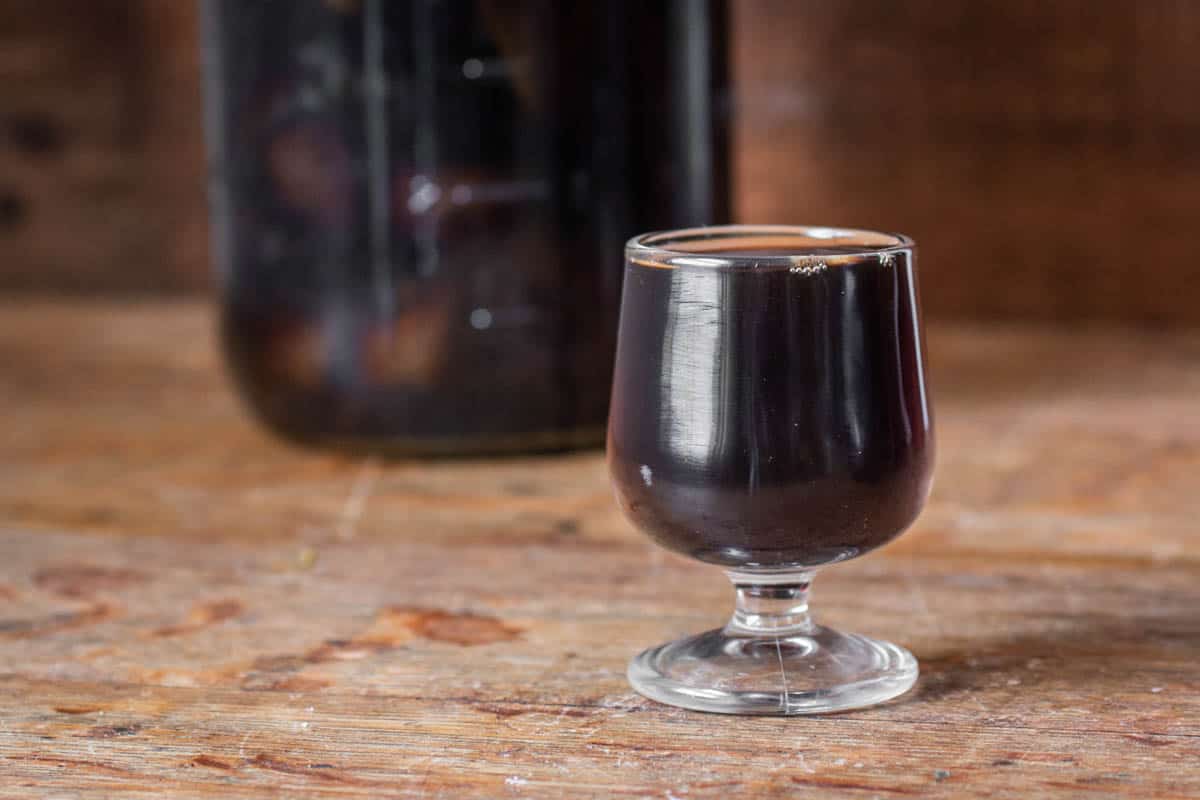
You want the flavor of the walnuts to be at the front. People (myself included), have a tendency to overdo aromatics, but less is more here.
To be clear, some traditional recipes call for nothing but liquor and walnuts, and there is nothing wrong with doing that, I actually recommend you try it once to really get the feel of the flavor that green walnuts add to liquors.
Recommended
Galium or vanilla
Both Galium triflorum (a small handful fresh or dried) or a single vanilla bean will add a great undertone to either liquor.

Almond aromas
Almond loves vanilla, and there's a few different ways you can layer flavor in these liquors with it. Almond extract is not an option as it's too strong.
I prefer a big handful of dried meadowsweet flowers, or about 2 tablespoons of dried, ground chokecherries, plum or apricot kernels.
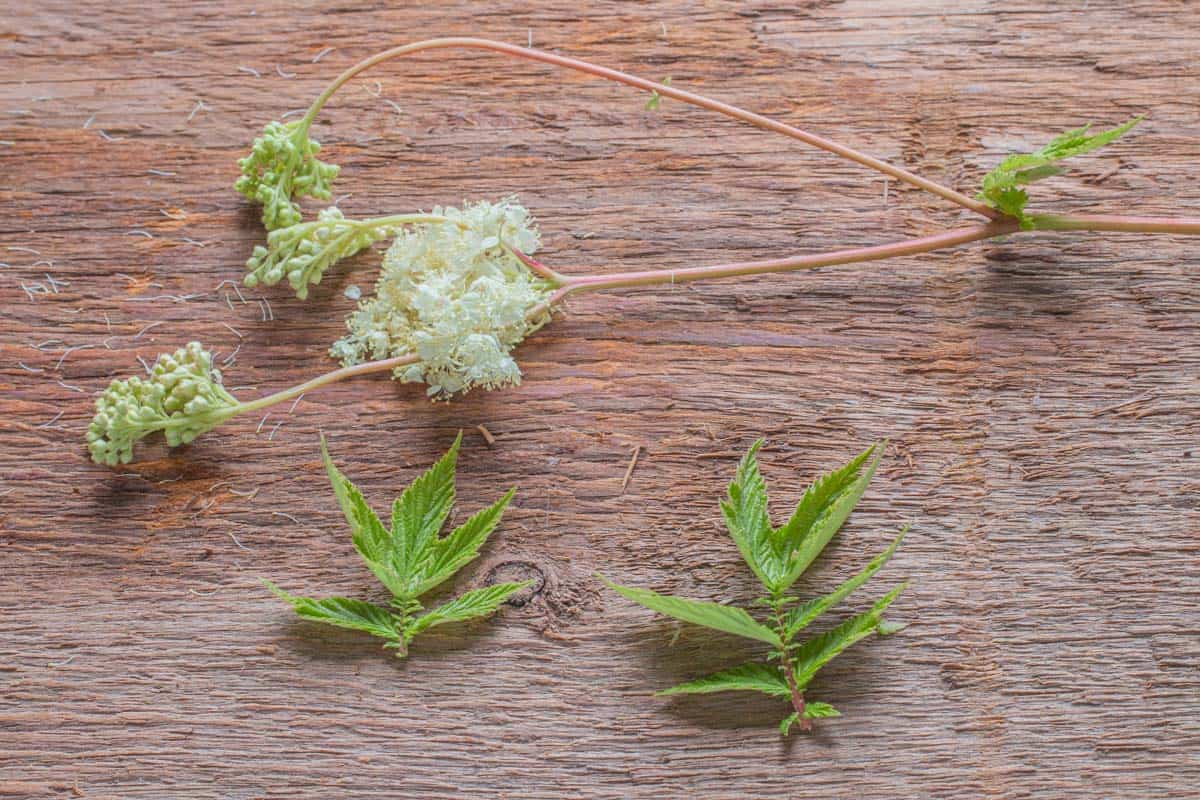
Allspice and cloves
These are both good, but go easy on them. If you look at the recipe I outline below you'll see that I'm adding 7 individual allspice berries or cloves, which will see like a tiny amount compared to the amount of liquor the finished recipe makes.
Both of these spices are strong, and they'll be mingling with the liquor for months. You can always add a couple more, but once they're in you can't take them out.
Orange and Lemon Zest
I like both of these in my nocino and vin de noix occasionally, but, again, I make sure that it's in small amounts. I like to keep it to no more than two citrus of either lemons or oranges in a batch of the size I outline in this post.
When in doubt, go easier on the orange as it can also get strong and overpower things.
Young Walnut Leaves
Yep. Walnut leaves. The young leaves of black walnut trees have been traditionally used to make a number of different things, typically ketchup/catsups, and a thin, vinegar-based sauce called bay sauce, but they may also be used in nocino and vin de noix.
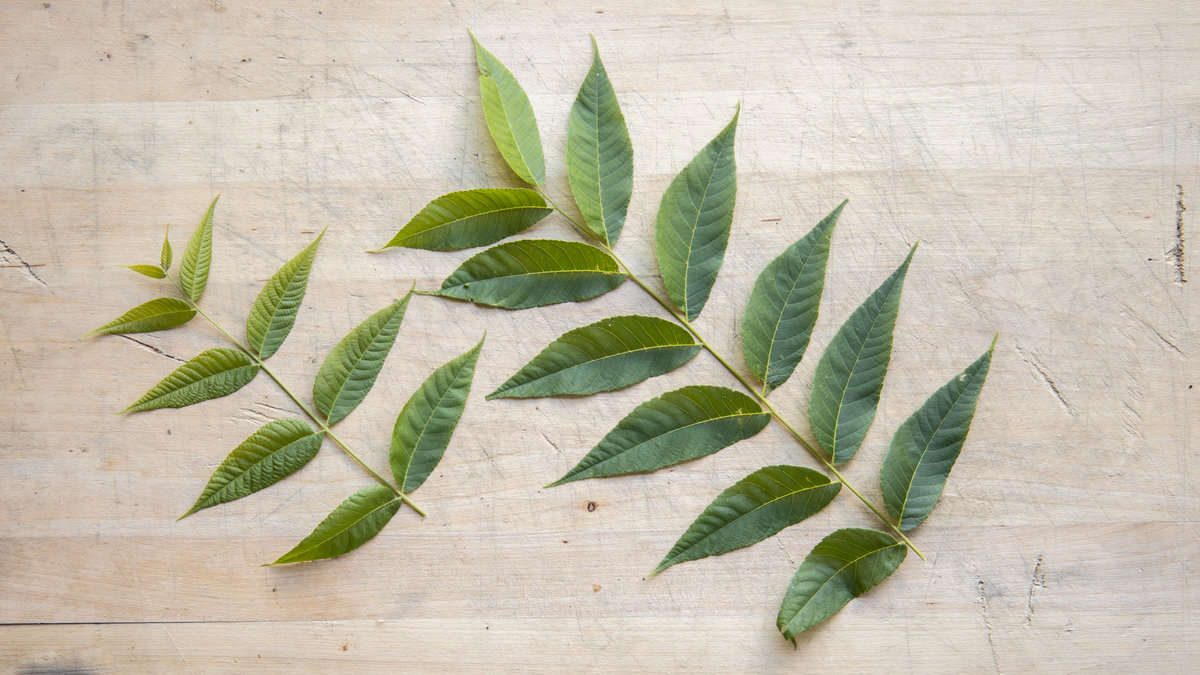
The most important thing when harvesting walnut leaves is to make sure that you're harvesting young, meristematic leaves from the very tip of the branches. When you rub them, the leaves should give off a similar aroma to the green nuts. Older leaves won't have an aroma, or it will be near-unnoticeable.
Not recommended
Cinnamon and Star Anise
While it might be tempting to use cinnamon as some recipes for nocino and vin de noix call for it, resist the temptation. Adding cinnamon, in just about any quantity (as well as star anise) will hide the flavor of the other aromatics, particularly the walnuts that have a pretty subtle flavor.
You'll wind up with a drink that tastes like Christmas time, instead of a mild, gently aromatic liquor. It won't be bad, but it won't taste like nocino or vin de noix, at least to me.
What's it taste like?
The finished product is rich and complex. There's more noticeable tannins in vin de noix than nocino as it's made with red wine, but as they age, they'll round out a bit, giving it notes of leather, cherry wood, and tobacco.
If you didn't tell people what they're drinking, they'll probably just ask you where you got the great sherry. The amount of sugar varies in some recipes, but I recommend starting with the small amount listed in the recipe and moving up from there. It shouldn't taste like candy.
Enjoy as you would sherry or port
The finished product is a great thing to break out when company comes over for a drink, or as an after dinner digestif. It's also good with cheese and charcuterie, and I've been known to add a splash to dishes or sauces where I might add sherry, eau de vie or port.
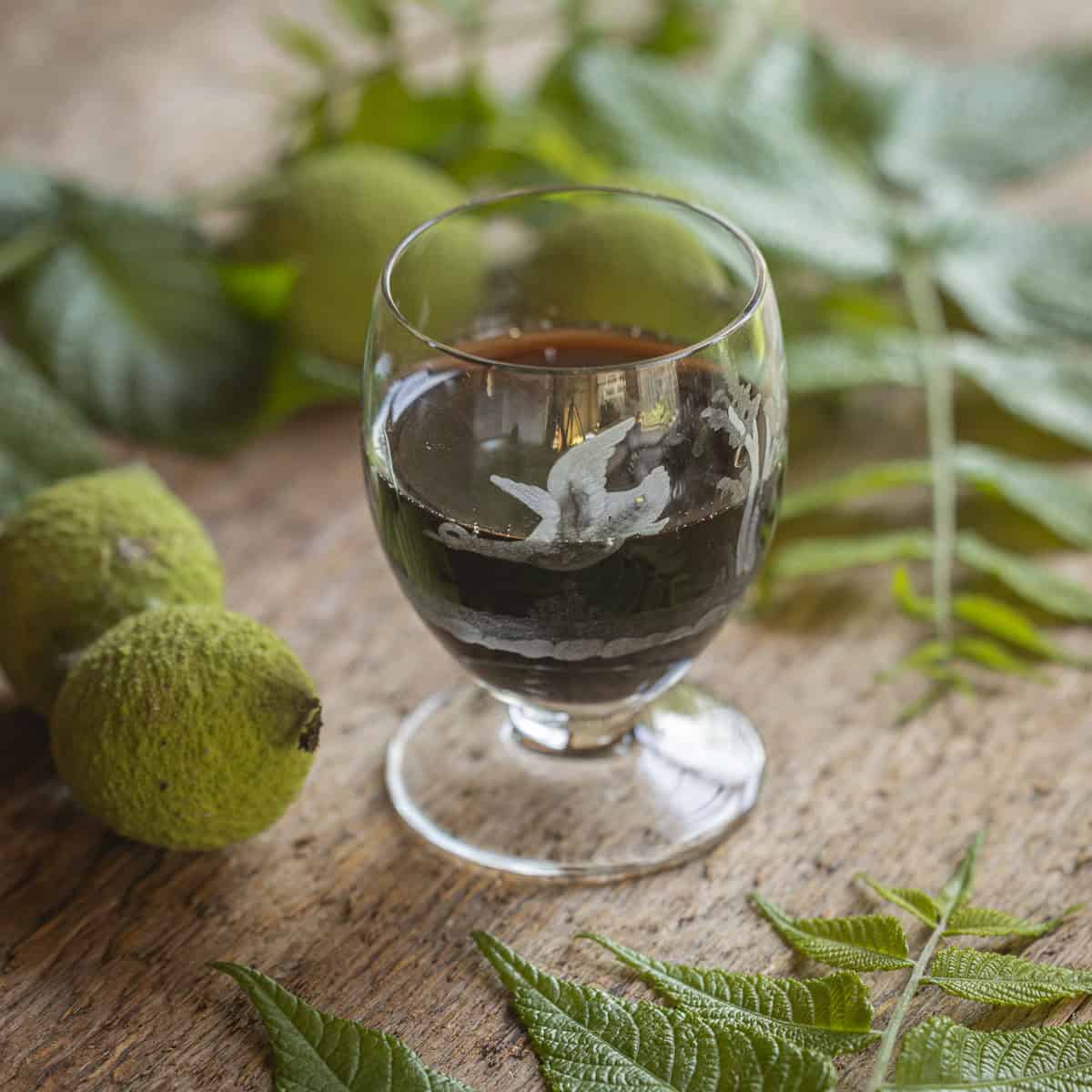
Finally, vin de noix is only one of many things unripe nuts can be used to make. For a full breakdown and explanation, check out my more in-depth post on cooking with green walnuts.
Related Posts
Nocino, The Black Walnut Liquor
French Walnut Wine or Vin de Noix
Ingredients
Maceration
- 10 oz green unripe black walnuts, about 12 medium sized they must be soft enough that you can cut them in half easily. I like mine the size of small ping pong balls.
- 225 ML brandy scant cup
- 1125 ML red wine 1.5 bottles
Aromatics (can be varied to your taste)
- 3 cloves or allspice berries
- Small handful of dried or fresh Galium triflorum leaves
- 3 strips of lemon peel
- 100-200 grams honey or maple syrup or to taste
Instructions
Walnut Maceration
- Wearing gloves, halve the walnuts, then combine with the remaining ingredients in a half gallon glass jar you've meticulously cleaned and has no residual smells from other projects. Allow to macerate/rest for 30 days.
- If you're unsure about the sweetness, start with 100 grams of honey or maple syrup, then adjust it with more when it's done aging until you like it. If you like sweeter tipples, add the whole 200 grams.
Storing
- Strain, store in jars or corked bottles and keep in a cool dark place for at least 6 months.
- As it ages, taste the liquor occasionally to get a sense of how the tannins mellow over time. I think they’re best opened near the end of the following winter.
Serving
- Serve the walnut wine after dinner as a digestif as you would sherry or port. It's also good with charcuterie and cheese.


Zach
Hey Alan! I was wondering if you've ever come across a "black walnut wine", in the style of a country wine. I know there's a black walnut leaf wine, as well as nocino and vin de noix but I can't find anything where the green nuts are steeped and then fermented. Almost something like a thinner version of your black walnut molasses fermented into a wine. Thoughts?
Alan Bergo
Hi Zach, no I haven't.
Melissa
Hi,
When I was in France they would serve a lovely cocktail with one part Vin de Noix and three parts red wine. It was the local drink in the Dordogne.
Alan Bergo
Thanks for sharing Melissa, I hadn't heard of that yet.
Leslie Brandt
I have enough English (Persian) walnuts to try two Vin de Noix.
(Spouse already made her nocino)
1) 1.3 l RED wine with 1/2 C brandy
2) .7 L WHITE wine (Viognier that is tasty but too old) with 1/2 C brandy
No sweetener or aromatics added, yet.
Three questions, please:
1. Have you ever used white wine?
2. Do I need to add more brandy to the RED to bring the alcohol concentration higher to prevent rotting?
3. Do the French-style canning jars with the metal snap ringed lids need to full or is 1/4 air okay?
Alan Bergo
HI Leslie. No need to add extra brandy. It will never mold. Ideally use non-reactive lids.
P. F.
I found low proce tawny port in the supermarket, so I tried that instead of brandy + wine. I didn't use a lot of honey. I'm curious how it turns out.
Alan Bergo
Patience is a virtue here. Forget about it for a good long while. It should be just fine.
Richard Stevens
I made this for the first time last/this year. I used a Barossa valley Shiraz. Honestly, I think I like regular Nocino better. I would use a less robust, less tannic wine next time. The wine tannin plus the black walnuts is a bit too much for me. I also made a Shagbark Hickory Nocino style liqueur. Now that was even better!
Alan Bergo
Thanks for sharing Richard.
Abigael Crecca
Appreciate your replying!! Thank you. My local tree is dropping fruit now. It is November PNW. Is it fine to use them? They smell heavenly
Alan Bergo
No this must be made in the early summer when the nuts are green and can be cut through with a knife.
TERILEE HENDERSON
Have you ever experimented with using mature, ripe walnuts (vs green) for this recipe, Alan? Or just forget this idea?
Alan Bergo
Hey Terilee, sorry, it's not possible to do that.
Sam Van Lommen
I'm trying different recipes but I'm using 94% alcohol. How would this translate into this recipe? I assume 3x the amount of wine and honey or maple syrup or am I seeing this wrong?
Alan Bergo
You don't use 94% alcohol for this, you use wine. I think you're confusing this with nocino.
Alex
Hi Alan,
This recipe sounds so delicious! Thank you for sharing it! I picked some green walnuts about 10 days or so ago and have been storing them in the fridge. They are certainly still safe to use but I am wondering if the scattered black blemishes they have been developing on their skin while in storage will cause a quality issue in this recipe? Would you recommend I try your walnut jam recipe instead (since the skin will be peeled off in that recipe)?
Thanks for your help!
Alex
Alan Bergo
The blemishes are bruises and are natural. Proceed.
Alexandra
Thank you!
Karen
Hi, Great post and recipe! I just had to check about the name of one of the plants you mentioned and if you mean sweet woodruff, its galium odoratum (instead of trifolium).
I love the stuff (vin de noix and sweet woodruff, so will definitely will be adding the latter.
Alan Bergo
No that’s not a typo, I mean Galium triflorum. It’s stronger than woodruff.
Christen
I’ve got the galium and the angelica root dried. What do you think, a couple tablespoons of galium and one tablespoon of angelica root?
Alan Bergo
1 tablespoon of galium, dried and crumbled would be ample-it's very strong. 1 thin slice of angelica root the size of a peeled strip of lemon zest, if you want.
Richard Stevens
What kind of red wine do you use?
Alan Bergo
A dry red wine you would like to drink.
Elycia
Question: should it macerate in an airtight container, or will there be gasses released from fermentation?
Alan Bergo
A maceration is not fermentation, so there will be no CD. Air tight container is fine.
Alex
One more question about this step- should the mixture be kept at room temperature during maceration or in the refrigerator? Thanks!
Alan Bergo
Cool dark place like a pantry, etc.